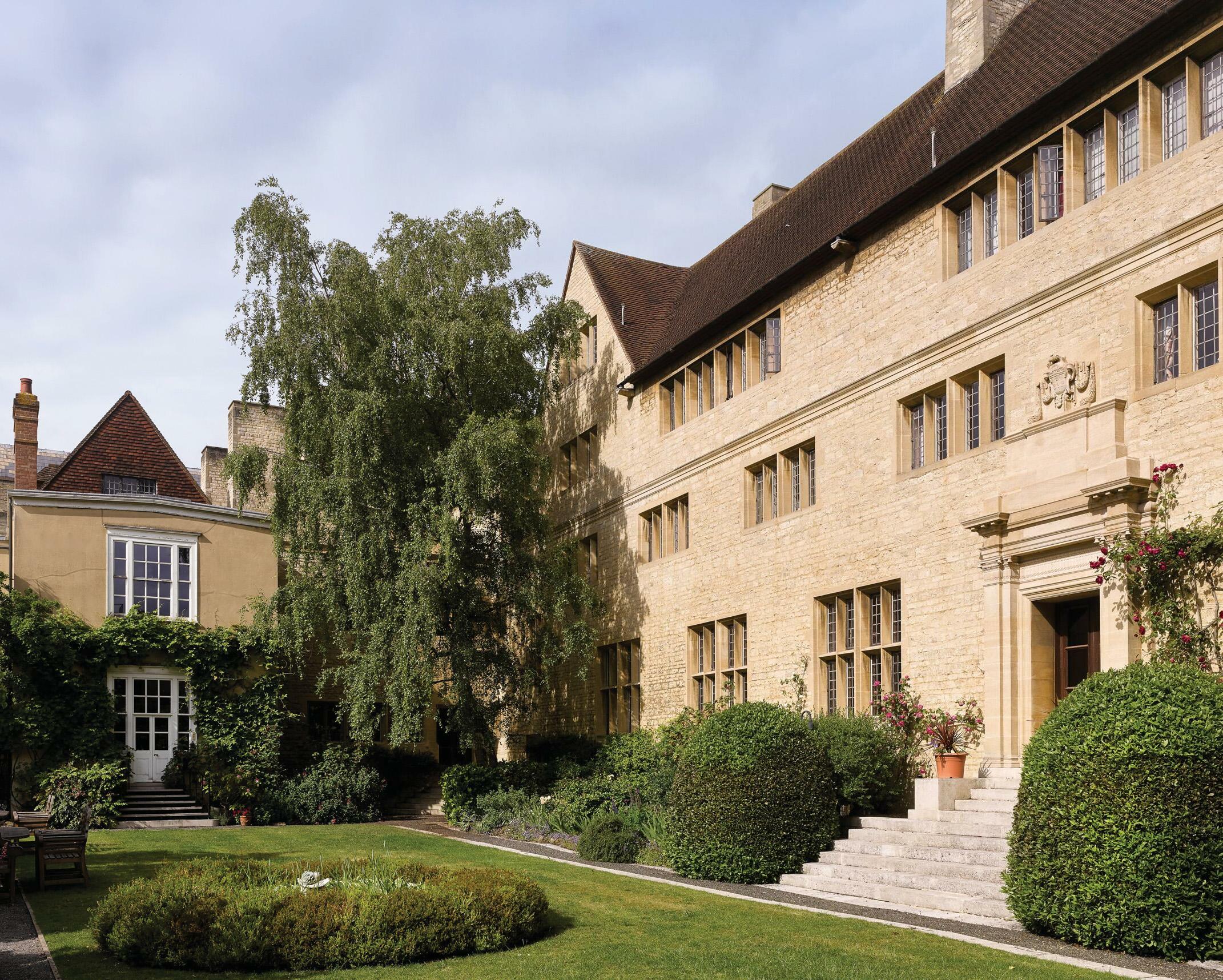
WHY not ask me?' enquired Sir Edwin Lutyens, when Father Martin D'Arcy needed an architect for Campion Hall in Oxford. It was 1934 and Lutyens was then in his mid sixties, knighted and the most famous architect in the country, whose oeuvre ran to some 550 buildings. 'But, Ned, D'Arcy replied, 'you have the reputation of being most appallingly expensive.' Lutyens assured him that his fees would be minimal and that he would keep an eye on the cost. He thus entered the esoteric, socially glamorous world of Jesuit Oxford, where architectural austerity would be combined with high art to form a haunt for, among others, Evelyn Waugh. Lutyens told Sir John Rothenstein that he considered Campion Hall his best building.
Although Oxford’s doors had been open to men of all faiths since 1871, it was only at the end of the century that the English Hierarchy thought it safe for Roman Catholics to attend. First on the scene had been the Jesuits, who opened Pope’s Hall—named after its master Thomas Pope, Society of Jesus (SJ)—in 1896. It was a small establishment, next to the Lamb and Flag pub, which, by the 1930s, seemed inadequate both to the numbers of Catholics at the University and the image that D’Arcy wanted to project. D’Arcy, who had been teaching at Oxford since 1927, was Roman Catholicism’s leading public intellectual in the UK, a magnet for an intellectual and social elite: among those who converted were Evelyn Waugh and Graham Greene. A vivid description of him comes from the artist Stanley Parker: his etiolated face looked as if it was ‘wasted to the bone by the rarest and most exquisite emotions, seared with the imprint of the deepest thought, consumed, almost, by the inner fire which blazed and smouldered in his eyes’.

Save our family farms
IT Tremains to be seen whether the Government will listen to the more than 20,000 farming people who thronged Whitehall in central London on November 19 to protest against changes to inheritance tax that could destroy countless family farms, but the impact of the good-hearted, sombre crowds was immediate and positive.

A very good dog
THE Spanish Pointer (1766–68) by Stubbs, a landmark painting in that it is the artist’s first depiction of a dog, has only been exhibited once in the 250 years since it was painted.

The great astral sneeze
Aurora Borealis, linked to celestial reindeer, firefoxes and assassinations, is one of Nature's most mesmerising, if fickle displays and has made headlines this year. Harry Pearson finds out why

'What a good boy am I'
We think of them as the stuff of childhood, but nursery rhymes such as Little Jack Horner tell tales of decidedly adult carryings-on, discovers Ian Morton

Forever a chorister
The music-and way of living-of the cabaret performer Kit Hesketh-Harvey was rooted in his upbringing as a cathedral chorister, as his sister, Sarah Sands, discovered after his death

Best of British
In this collection of short (5,000-6,000-word) pen portraits, writes the author, 'I wanted to present a number of \"Great British Commanders\" as individuals; not because I am a devotee of the \"great man, or woman, school of history\", but simply because the task is interesting.' It is, and so are Michael Clarke's choices.

Old habits die hard
Once an antique dealer, always an antique dealer, even well into retirement age, as a crop of interesting sales past and future proves

It takes the biscuit
Biscuit tins, with their whimsical shapes and delightful motifs, spark nostalgic memories of grandmother's sweet tea, but they are a remarkably recent invention. Matthew Dennison pays tribute to the ingenious Victorians who devised them

It's always darkest before the dawn
After witnessing a particularly lacklustre and insipid dawn on a leaden November day, John Lewis-Stempel takes solace in the fleeting appearance of a rare black fox and a kestrel in hot pursuit of a pipistrelle bat

Tarrying in the mulberry shade
On a visit to the Gainsborough Museum in Sudbury, Suffolk, in August, I lost my husband for half an hour and began to get nervous. Fortunately, an attendant had spotted him vanishing under the cloak of the old mulberry tree in the garden.